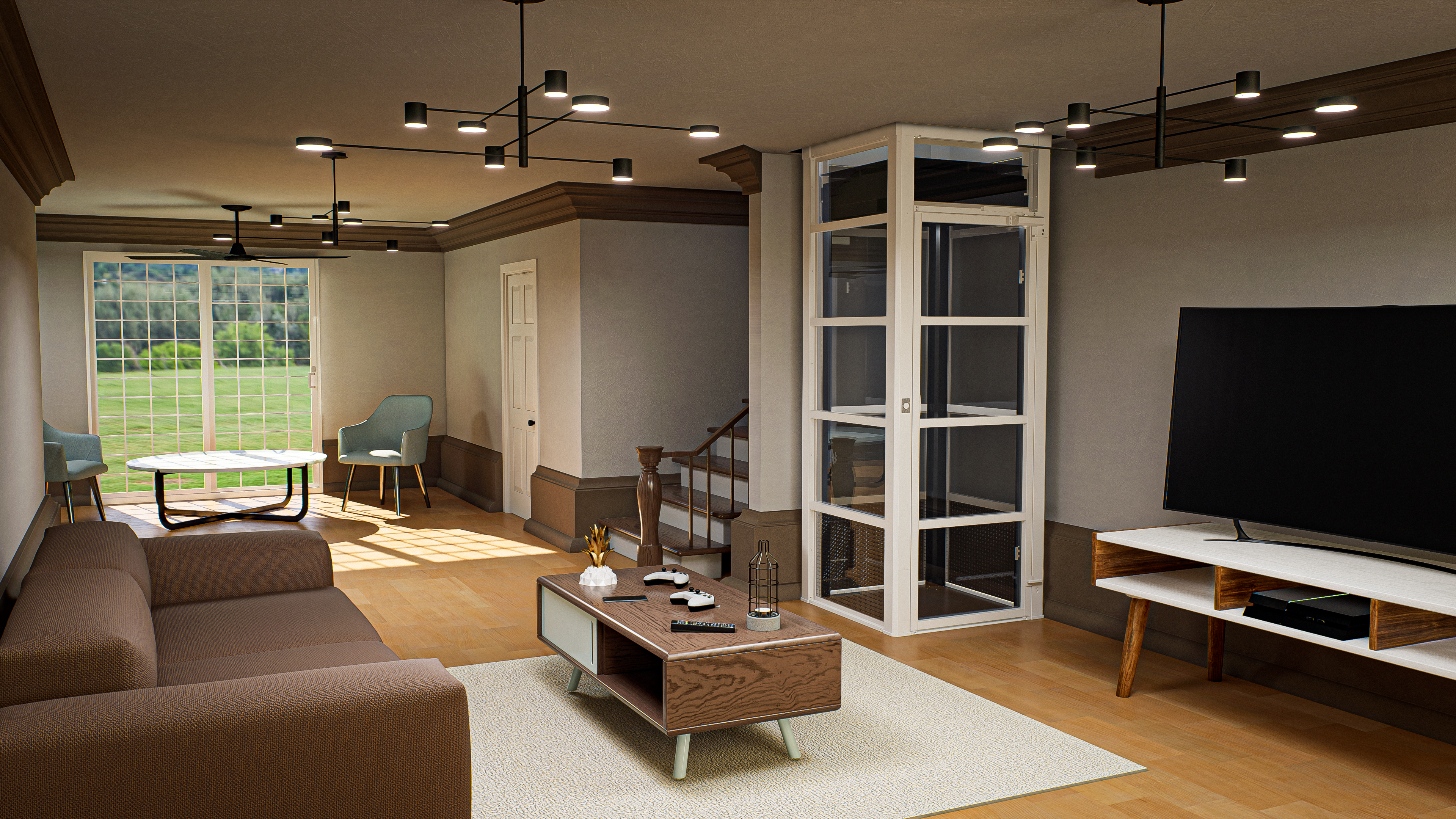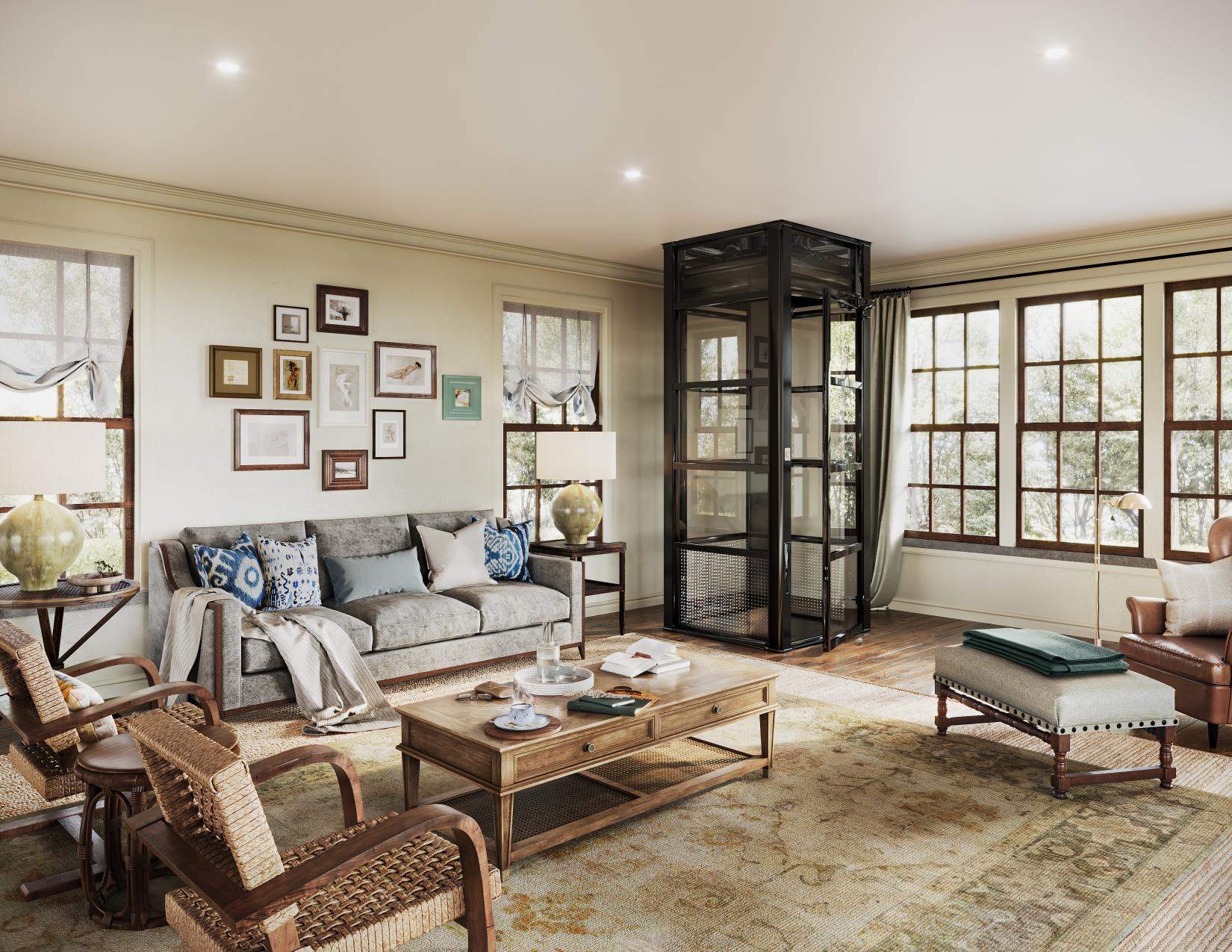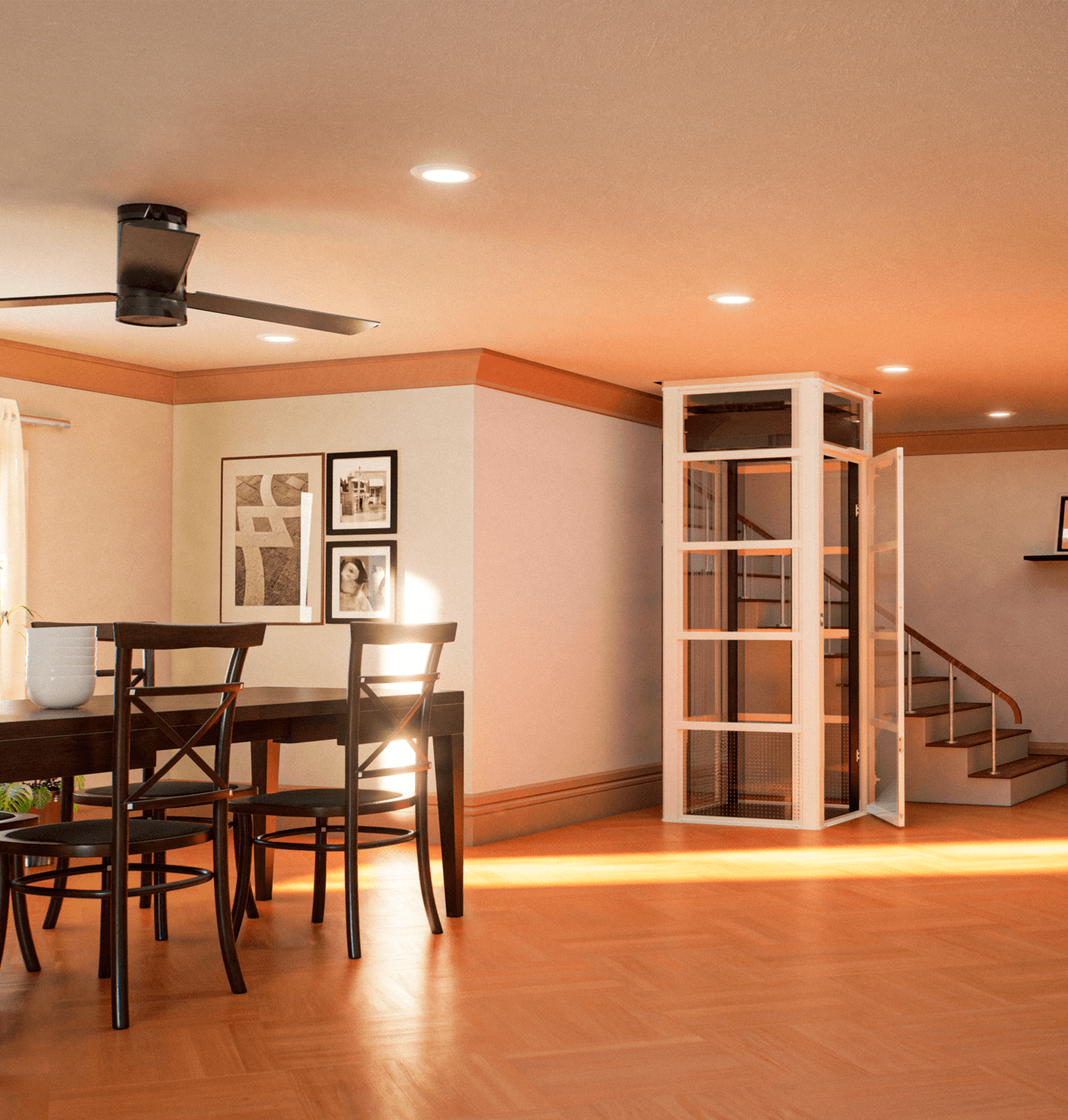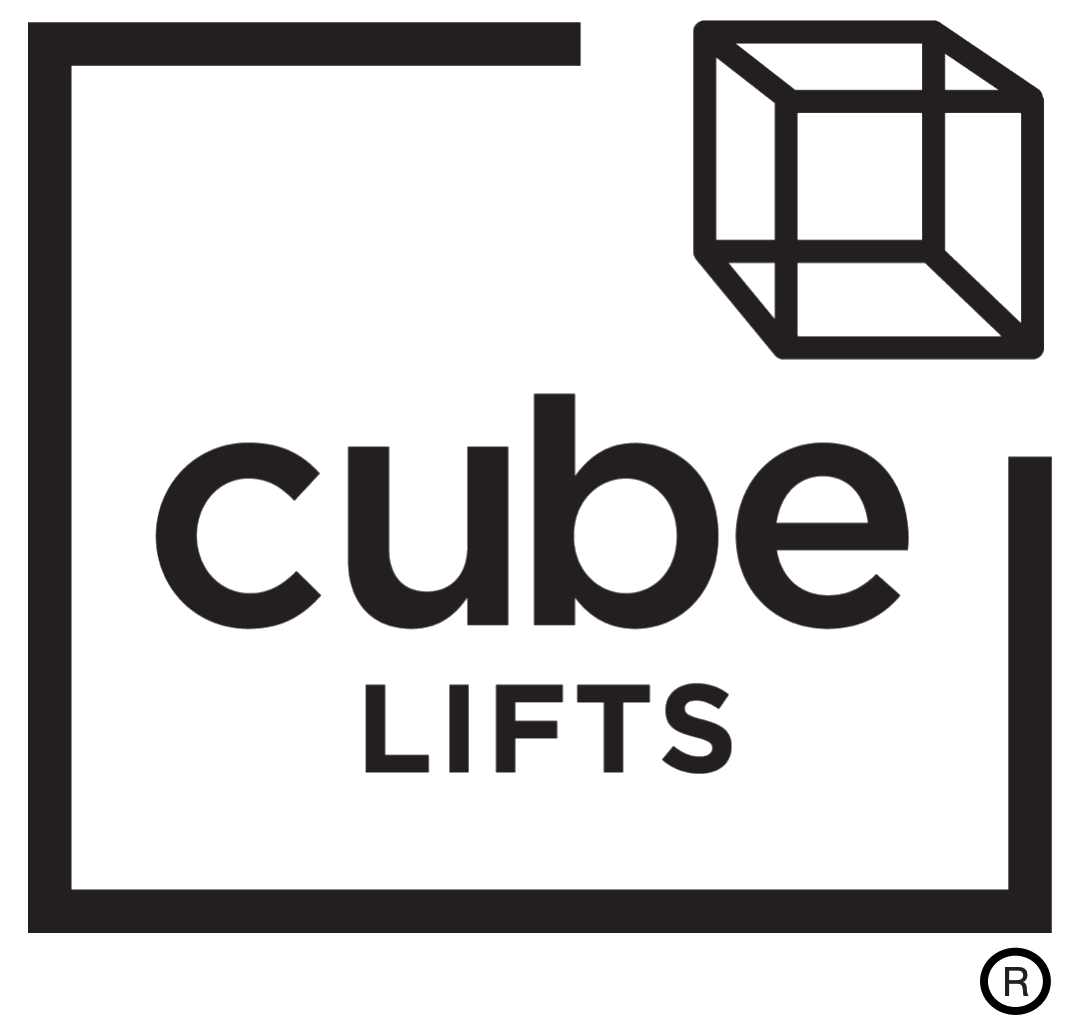Home elevators can be bought at affordable prices for many reasons, most of which revolve around increased accessibility, comfort, and independence. If you find it harder to move around due to age or injury, low-cost elevators make it possible to navigate a house that has more than one floor without having to pay for major home renovations. Such mobility devices provide a long-term investment, increasing the value of a property, minimizing the need to relocate to assisted living, and presenting efficient accessibility solutions with lower operating costs.
Designs that blend in with your current surroundings ensure that a home elevator cost makes it possible for homeowners to improve their living environment on a budget. As you continue reading below, we’ll discuss more in-depth about cost-effective home elevator solutions.
The Importance of Affordable Home Elevator Options
Cost-effective home elevators are one of the most effective means to help homeowners get access within their multi-story homes. With advances in modern medicine allowing people to grow older, the need for accessibility solutions are on the rise. As a result, the demand for affordable home elevators has grown worldwide. Home elevators are a sensible way to bypass the obstacle of stairs for multi-story homes and enable those with disabilities, the elderly, or those recovering from surgeries to travel seamlessly between floors.
Choosing the right home elevator will allow you to stay independent and live a better life without requiring additional assistance. Home elevators save you money, too, over the long haul as they are an investment that keeps on giving. It is recommended to avoid invasive and expensive home modifications like ramps or stairlifts, which are not as efficient or attractive as installing a home elevator.
In contrast to competitors, which may require regular upkeep or a large upfront cost to install, budget home elevators offer both practicality and economics, making them a more sustainable option for homeowners over the long term.
Another big advantage of affordable home elevators is how it can enhance the value of a house. A properly functioning elevator will make a home more attractive for potential buyers who are older in age or require accessibility features. In addition, many architects, real estate agents and builders have seen an elevator set their homes apart in a crowded housing market and help them sell their properties faster.
As an additional benefit, low-cost home elevators also feature a variety of styles and designs, enabling homeowners to pick the mobility solution that suits their aesthetic taste and space needs. Some modern elevators tend can be small and can be configured so that they will fit in with the style of the home. This ensures your accessibility needs don’t distract from the home’s aesthetics.
In addition, some home elevator technologies available, like pneumatic elevators, are energy efficient and operate using advanced technology. Powered by air, these state-of-the-art elevators have minimal energy usage and offer unique safety features. For people who own homes that will become less mobile over time, a low-cost home elevator offers not only comfort but a financial investment in security and independence. These elevators let people remain in their own homes longer, without being relocated to an assisted living or nursing home.
Home Elevator Cost: Cost-Effective Ways to Make Your Home More Accessible with Elevators
There are a number of ways to incorporate an elevator into your home and do so at a sensible cost. One of the easiest methods is choosing a smaller, simpler type of elevator, which costs less than bigger, elaborate elevators.
Some home elevators on the market are marketed as “through-floor” or “shaftless”. These lifts are smaller in size, designed for tight spaces, and can be much less expensive than traditional, larger elevators. These types of elevators are ideal for households that do not have the space or funds for a bigger installation.
Vacuum elevators are space-saving home elevators that do not require additional room for bulky machines or elaborate mechanics. Using pneumatic technology to generate list, vacuum elevators are efficient and compact, making them ideal for single family homes or multi-level condos. With an elegant panoramic design, the elevator car smoothly moves up and down by air suction and gravity, while the passenger enjoys a 360 degree view while traveling.
From a technology perspective, vacuum elevators operating using the cleanest and safest technology on the market. These residential elevators are particularly useful in retrofit scenarios where they can be installed without major structural changes needed for the home. Additionally, vacuum elevators are usually regarded as eco-friendly because they use less energy than standard elevators which makes them far easier to maintain.
Authorized distributors and subcontractors who provide inexpensive home accessibility will ensure you can get a mobility solution that is not only affordable but also meets your demands for safety and comfort. During an on-site consultation, they can also advise you on ways to reduce installation costs by offering an elevator solution which doesn’t require structural modifications. For those seeking a more traditional elevator, an empty closet is required to be converted into an elevator shaft. Converting closets into a shaft can have added expenses as a pit will need to be excavated.
When it comes to the long-term costs, consider energy-efficient solutions like vacuum elevators. While many contemporary home elevators feature energy-efficient option, these air-driven elevators are the only elevators in the world powered by the most abundant resource in the world: AIR!
Designing a Safe and Cost-Effective Home Elevator System
Designing a reliable and affordable home elevator system is a strategic job that requires a careful balance of function, safety, and cost. First of all, manufacturers take into account the needs of the user and a house’s architectural limitations. Through research and development, home elevator manufacturers work to design a lift that will make sense and be simple to install.
Invented in 2002, vacuum elevators provide several benefits to homeowners, including low energy consumption, compact footprint, and require minimal maintenance. It eliminates the need for a pre-construction shaft, pit or machine room, creating simpler installation with fewer home modifications. Resting on the existing ground floor, these self-supporting elevators can be installed almost anywhere inside the home.
In addition, vacuum technology typically consumes less energy than mechanical ones and are therefore more environmentally friendly. Using Pneumatic Technology to generate lift, Vacuum Elevators operate by air suction and gravity making them very innovative. In general, vacuum technology offers efficiency, affordability, and security across a number of applications.
Depending on how the home is laid out, a compact through-floor lift could be ideal. These smaller elevators take up less space with various lift capacities. Their small size also means that the elevator system can be easily installed without substantially rearranging the interior layout of design of the home.
Safety considerations should never be ignored in the design of any elevator system. Ensuring your home elevator is maintained is critical to prevent any irregularities in operation. Elevators, for instance, are often designed with door locks that prevent the doors from opening if the elevator is in operation.
Additionally, emergency stop buttons and internal cabin phones linked to the landline of the residence should be set up as additional safety features. As an upgrade for your home elevator, an added safety feature to consider is a battery backup package, which allows the elevator to continue working in the event of an electrical failure. This can ensure your home elevator is still operational even if electricity is out.
When choosing an elevator, homeowners should review the electrical requirements and power consumption used by the elevator technology chosen. More traditional home elevators operate using gases and lubricants that need to be frequently reviewed and changed. This can add costs over time. By choosing and energy saving solution like a Vacuum Elevator, homeowners experience less maintenance over time while saving energy. Power by air, Pneumatic technology is the most environmentally friendly elevator solution on the market.
Depending on the elevator size and the type of motor used for a traditional elevator, the cost and energy usage can also change. Lower-power motors, suitable for a smaller home, can require less maintenance than other technologies.
A second critical aspect of the design is that you have to make sure that the elevator is accessible and user-friendly. That means purchasing a home elevator with controls that are intuitive, including exterior call buttons and in-cabin operating panels that are easy to access and read. The controls should be positioned at convenient heights for those with limited mobility or in wheelchairs.
Additionally, it is crucial to make sure the mechanical elements of your home elevator are in good condition and working properly to ensure a smooth and safe ride. With a variety of cost-efficient elevator solution to choose from, homeowners can select the technology, model and size that best meets their needs.
Home Elevator Cost: FAQ
The most affordable home elevators are usually Pneumatic Elevators which are powered by air. These designs are space-saving, easier to install, and require less structural modification than larger, more traditional elevators. Their self-supporting design and quick installation make them a cost-effective solution for any homeowner. Alternatively, shaftless or through-floor elevators can also offer an economical alternative to stairs.
A home elevator varies in cost depending on the design, size, and complexity of the installation. Smaller, simpler systems with a minimal features often fall on the lower end of the spectrum, while larger or custom-designed elevator can be far more expensive. You’ll need to factor in installation, structural changes, and ongoing maintenance costs when deciding which solution is best for you.
Depending on the technology chosen, home elevators like Vacuum Elevators can usually be retrofitted into an existing structure with minimal modifications or pre-construction required. For traditional elevators, you can use an empty closet to convert into an elevator shaft, though added construction costs would apply.
Most home elevators these days are geared towards energy efficiency Pneumatic Elevators operate using the cleanest elevator technology on the market. Powered by air, their eco-friendly design ensures their electricity consumption has a nominal impact to your annual electrical bill. Selecting an energy-efficient elevator can save homeowners money over the long term while also helping preserve the environment.
If you’re looking for a lower cost home elevator, opt for a basic or standard design. A hydraulic or cable-driven design typically requires more pre-construction requirements including a shaft, pit or machine room. Selecting fewer customizations and upgrades can also impact the total cost of the unit.
This is why space-saving home elevators, that offer more flexibility of installation, can often be the most economical home elevators for single-family residences.”
